
Arquivo para a ‘Sem categoria’ Categoria
The electric car batteries evolve
The lithium ions are those that feed many mobile devices, but use this technology in automobiles has proved difficult, and the current batteries in electric car have little autonomy (80 to 100 km only).
devices, but use this technology in automobiles has proved difficult, and the current batteries in electric car have little autonomy (80 to 100 km only).
Now researchers at the University of Cambridge are researching a kind of battery called lithium-air or lithium-oxygen, which can provide 10 times more energy, and even sufficient power to compare with gasoline, but it still involves some problems practical.
Now researchers at Cambridge University say they have patented a technology that overcomes some of the main obstacles, according to Clare Grey, project researcher and chemistry professor at the University of Cambridge, now “a significant achievement” of his team already has progress towards high capacity “as we take efficiency to numbers that compete with the current lithium-ion technology.”
With an efficiency of up to 93%, and does so using a different chemical from that used in previous attempts: employing lithium hydroxide (LiOH) in place of lithium peroxide (Li2O2), and also using carbon electrode in the base of the graphene and “additives that alter the chemical reactions at work on the battery, making it more stable and more efficient,” said the researcher.
The result is published in the journal Science.
Addicted to digital technology
Most people often confuse the fact that there are people addicted to technology, with the fact that digital technology is a new kind of “drug” that infected everyone.
with the fact that digital technology is a new kind of “drug” that infected everyone.
There are very simple ways to diagnose and combat addiction to technology, explains the medical Nerina Ramlakhan, specialist in energy and techniques to cool sleeping Nightingale Hospital in London, told BBC News.
He explained by saying that this is for people who can not turn off the same gadgets before bed:. “So you live in survival mode Your sympathetic nervous system is working in forced pace I suppose you feel miserable afternoon what. means that your body is acting on the basis of epinephrine, norepinephrine and cortisol, “then you really are hooked.
The profile of patients is almost always the same: perfectionism tendency to want to control everything and bruxism (teeth grinding while sleeping).
One of the self-radicas forms is receiving continuous doses of dopamine, a hormone released in the brain by the hypothalamus, thus improves motivation, increases the heartbeat, improves mood, better able to process information and more sleep, explained Dr. Ramlakhan .
She recommends four simple steps recipe to control this addiction:
– Creating a “sunset electronic” go away electronic devices, for example, read a book (not electronic).
– Keep the clock away overnight, not to tell time with this avoids the type anxieties: I have to sleep, I can not relax, etc.
– Do not use your smartphone as an alarm clock, recharge healthy energy: have breakfast, but in half an hour after waking prefer other beverage to coffee.
– Keep yourself hydrated at least two liters of water a day.
Of course, the important thing is to use technology only necessary and avoid “technology fatigue”.
Crise da Razão Cínica
A razão foi e é ainda o grande motor da modernidade, a falta de consciência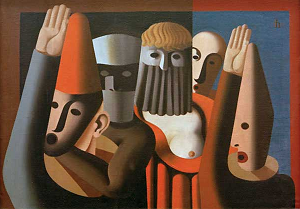 do que seja isto levou a uma análise superficial chamada “líquida”, no qual tudo o que sólido vai se liquefazendo, sem dizerem qual o liquidificador que faz isto, nem a raiz primária do líquido. O quadro “mascaras” do alemão Heinrich Hoerle Malscaras, de 1929, parece detectar este movimento de cinismo envolto em máscaras humanas vidas, o homem do pré-guerra.
do que seja isto levou a uma análise superficial chamada “líquida”, no qual tudo o que sólido vai se liquefazendo, sem dizerem qual o liquidificador que faz isto, nem a raiz primária do líquido. O quadro “mascaras” do alemão Heinrich Hoerle Malscaras, de 1929, parece detectar este movimento de cinismo envolto em máscaras humanas vidas, o homem do pré-guerra.
A ideologia e a forma de dominação das diversas organizações e hierarquias que se instalam no tecido social são o suco deste líquido, querem dominar e não conseguem mais, aquilo que o filósofo alemão chamou de o naufrágio do humanismo na escola da domesticação. Sloterdijk escreveu também a “Crítica da Razão Cínica”, um volumoso trabalho que ainda não o digeri completamente, mas com uma tese central: a razão tornou-se cínica para explicar o inexplicável, e o filósofo alemão consegue mostrar o que os “liquidificadores” não mostram: a raiz da liquefação moderna.
Parte da crítica da razão pura de Kant, desenvolve e recompõe o legado da filosofia ocidental de cunho humanista e progressista, mas rompe com Adorno, Horkheimer e Sartre.
O que está por trás do líquido moderno, é que a ideia da substituição do saber para a superação do mito, a da ordem estabelecida pelo estado como superação da natureza humana, e por último o humanismo da domesticação humana, cujo ápice foram duas guerras mundiais, não parece ter sido uma boa fórmula, então ela se liquefez.
O cinismo é justamente tentar reestabelecer uma ordem já perdida, que a humanidade fatigada não aceita mais, quer um humanismo novo: de todo homem, não dos chefes.
Verdade, método e política séria
Hans-Georg Gadamer foi um importante filósofo alemão do século XX, falecido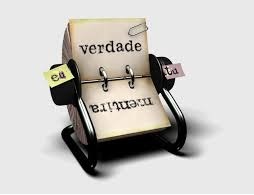 em 2002, e tendo dedicado seus estudos a filosofia grega e história da filosofia, foi seu livro Verdade e Método, publicado pela primeira vez em 1960, que o autor desenvolveu uma hermenêutica filosófica.
em 2002, e tendo dedicado seus estudos a filosofia grega e história da filosofia, foi seu livro Verdade e Método, publicado pela primeira vez em 1960, que o autor desenvolveu uma hermenêutica filosófica.
Foi aluno de Martin Heidegger, e seu assistente na Philipps-Universität Marburg, de onde tirou a historicidade para suas reflexões, e se o tempo é o horizonte ao qual submetemos toda a nossa compreensão, é nele que as teorias e ilusões se transformam em formações históricas.
Gadamer analisou o descrédito sofrido pelos preconceitos durante a instauração de todo Iluminismo, e os obstáculos que representam aqueles juízos prévios sobre tudo na busca do conhecimento e da verdade, afirmando que o Esclarecimento (Aufklãrung) foi o tribunal que queria que tudo passasse pela razão, diríamos hoje pelo crivo “partidário” daqueles que se imaginavam os donos da história e da evolução. No período áureo do valor da “razão”, todo o resto era preconceito e superstição, e a história provou que não era assim, mas temos novos tribunais da razão novamente travestidos de revolucionários, mas cujos valores de verdade e método despencam.
Esta razão é hoje a razão política, mas política de quem e determinada como verdadeira por quem ? aqueles que juravam uma grande mudança, ficam chocados com as próprias mentiras e valores que derramaram sobre a sociedade vista antes como supersticiosa, conservadora ou “fundamentalista” e agora é preciso negar até mesmo a realidade. Hoje a autoridade não pode ser confundida mais como uma necessidade de “obediência cega”, desprovida de fatos e contextos, que uma certa racionalidade proveria, mas que os fatos vão aos poucos desmentem, está esclarecido que é “um atributo de pessoas” e não de sistemas, de lógicas instrumentais ou de ideologias.
A consciência de que estamos de fato em uma crise, que aqueles que queriam desmentir ao longo do curso do desenrolar dos fatos tiveram que aceitar, e que nem mesmo tem conhecimento da profundidade desta crise, mostra que esta pretensa racionalidade ruiu.
Resta como dita o bom senso, aqueles que conseguem mantê-lo, um diálogo franco e aberto, sem mais mentiras e distorções dos fatos, este diálogo deve estar fundamentado na ideia que existe o Outro, e este não pode ser ignorado, ironizado ou estereotipado, só por não ser um EU.
We can limit the intelligence Artificial
Now is serious discussion, proximity to situations where machines can go beyond human capacity were openly discussed in Washington DC, an event sponsored by the Information Technology and Innovation Foundation (ITIF), and was discussed whether surpassing human intelligence, machines place in check point the human.
The matter was reported in the Computer World and is philosophical concern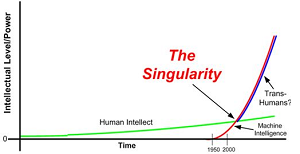 of philosophers such as Peter Sloterdijk, Hannah Arendt and Heidegger Ernest, but it is also curiously expected as singularity point,
of philosophers such as Peter Sloterdijk, Hannah Arendt and Heidegger Ernest, but it is also curiously expected as singularity point,
The researcher Stuart Russel, professor of Electrical Enginnering and Comptuer Sciences at U.C. Berkerley said:. “We’re all working on pieces of it…. If we succeed, we’ll drive the human race off the cliff, but we kind of hope we’ll run out of gas before we get to the cliff. That doesn’t seem like a very good plan…. Maybe we need to steer in a different direction.”
Russell was one of the five speakers on the panel today that took on questions about A.I. and fears that the technology could one day become smarter than humans and run amok.
Also the physicist Hawking, who wrote A Brief History of Time, said in May that robots with artificial intelligence could outpace humans within the next 100 years. Late last year, he was even more blunt: “The development of full artificial intelligence could spell the end of the human race.”
The state as religion and networks
The phrase is Francis Fukuyama, famous for the “end of history”, but want to understand its genesis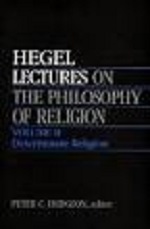 and its development today.
and its development today.
It was from elaborations from Kant to Locke that the modern state ideas were consolidated, but in Hegel not only idealism reaches its apex but also the ethics of the State, the positivist science and logic as the basis for a belief “secular” in the state.
The Hegelian philosophy is based on the philosophy of identity, expressing it in religion, history and finally in the right world with his concept of the state: “In addition, for live philosophy essentially the universality of the element, which itself includes particular, it raises it, more than in other sciences, the appearance of which in the end and the last results expressed the same thing, and even his consummate essence “(Hegel, 2001).
As art Hegel in his Aesthetics courses, related philosophy with the representation of truth wrote: “For only philosophy as a whole is the knowledge of the universe as an organic necessity in itself, which develops from its own concept and in his own need to relate herself as a whole returning to you as a world of truth “(Bousaguet & Bryant, 1889).
Structure in history as the state Hegel says that the first universal form was despotism, then democracy, aristocracy, and monarchy Third, it shows that it is the State’s idea comes first materialized through the spirit becoming aware themselves in the story, so the state would be the very embodiment of history, Marx part there in his proletarian state.
Let’s look at the text: “As a result, the first form of government we had in world history was the despotism; then came democracy and aristocracy, and, thirdly, the monarchy “(ibid). Hegel shows the realization of the state as a realm of freedom for political-administrative determination as monarchy, universal instance in which the idea is materialized by through the mind becoming aware of itself in history. “(Hegel, 2001).
The state religion believes that he is all powerful, it is fair, there is crisis, networks are there to deny and demystify all this, it is not printed, but the networks of people who are there.
References:
Hegel, G. L. Phenomenology of Spirit. ew York: Fordham Univer- sity Press, 1976. NY: Fordham University Press, 1976., 1976
______. Philosophy of History. Ontario, Ca: Batoche Books, 2001.
Bonsaguet, B. & Bryant, W.M. Hegel’s Lectures on Aesthetics, Selections from Hegel’s Lectures on Aesthetics, “The Journal of Speculative Philosophy”, 1886.
Body, infinite and Noosfere
The infinite is seen from the ontology, and exactly how the philosopher Lévinas sees it, is but the idea that the whole universe is a Being, and he lives a body life, as proposed by the philosopher Leibniz early modernity with his theory of monads.
that the whole universe is a Being, and he lives a body life, as proposed by the philosopher Leibniz early modernity with his theory of monads.
The body metaphor is important because it means that each cell (Monad in the case of the universe) is subjected to a drive and is therefore living organically and communicates.
Heidegger wrote to Leibniz player: “The internal possibility of individuation [of being], its essence lies in the monad as such. Its essence is to drive “(Heidegger, p. 99).
“The drive is while this unifying, the nature of a being. Each monad always has its ‘constitution proposes originale’. This is delivered along with the act of creation.” (Heidegger, pp. 99)
Here overcome the dichotomy nature and culture, we might say the Monad individuated (not individualized because it remains in drive with the other), to establish their drive together with the whole universe (unifying) establishes the general culture as a result of this whole set of drives, and this refers to the act of creation or the Big Bang, or drive with the whole universe, and this gives us an organically living body mind.
But this body and the universe is not finite as the body of an individual being, so be as Lévinas thought from the third meditation Descartes: “I must not imagine that I can not conceive the infinite by a true idea, but only by the negation of that is finite, just as I understand the home and darkness by denying the motion of light: for, on the contrary, I see clearly that there is more reality in infinite substance than in finite substance and, therefore, that, somehow, I have in me the notion of infinite prior to the finite … ” (Meditations of the Descartes).
Teilhard Chardin called this whole body of Noosphere, because being a mystical understand also spiritually whole body communicates (noon spirit), and claimed that the whole universe is the body of Christ, was accused of pantheism, as Spinoza was and how could Leibniz be, maybe not today accused Levinas or Heidegger, after all these have the most generous idea of Being, the mystical point of view.
All this may seem difficult, but it is simple if we use the metaphor of communicating vessels, in pot put water all rise, if we remove all water fall, each pot is a being, water is the drive, and all level the vessels is the culture at some point.
All we know of the universe today is only 4% that is the baryonic matter, the remaining 96% of matter and dark energy remains unknown, as Levinas says at the beginning of his book Totality and Infinity: “The truth remains hidden”.
The first dichotomy object vs subject
One of the great mysteries of Enlightenment philosophy, is the Kantian concept of “thing-in-itself”. After so many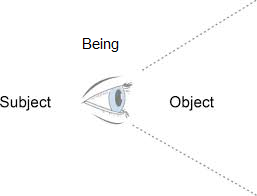 interpretations of the “thing-in-itself” of Kant (except is) already does not hurt that I come now to another.
interpretations of the “thing-in-itself” of Kant (except is) already does not hurt that I come now to another.
The one thing is certain: Kant opposed the “thing-in-itself” the “phenomenon.” The “phenomenon” – according to Kant – is the objective and concrete manifestation of reality as observed by humans of an inter-subjective way through perception (sense); the phenomenon is the object with which the subject interacts, then to invent a transcendental subject that connects the thing to the subject, and the worst turned religion for many.
Therefore, the phenomenon is the thing, and the “thing-in-itself” is the essence of the thing, but the subject does not need to transcend to interact with them, just be scientific instruments.
Now, the essence of the thing or the “thing-in-itself” could be the composition of a macroscopic quantum object if Kant had not said that the human soul is the “thing-in-itself” the phenomenon “man”, created a individualized soul or soul is.
Here, things are even more complicated by would be much more credible theory of Leibniz’s monads than the “thing-in-itself” of Kant, an entity that is not Self.
From the “thing-in-itself” of Kant (the model of the categorical imperative would himself) have developed the more abstract concepts of idealism, as exemplified by the concept of “thingness” of Heidegger, which comes from her teacher Husserl .
According to Heidegger, the thingness is the notion of “things as things” to Husserl and Heidegger, the whole thing is thingness and “thing-in-itself”, allowing the thing be like “two in one”, but as one for that is beyond what the human being, which is the subject of another, turn out to be something and to be part of thingness; the only thing that is not part of thingness is Das Sein or all together Dasein that is the existential presence subjective but connected to all and to the whole, although there is I and all the rest.
If Kant was still a distinction between one and another human being than me, and things, Heidegger went on to say that the only thing that is not a thing I am (if not to follow the reasoning do not worry because it does not lose anything with that).
Assuming that Kant conceived the soul (human) as something immanent (in the sense of immanence that is assigned by quantum philosophy in the sense of quantum physics formalism), which seems to be the case, then Kant conceived, in scientific terms current, soul and quantum composition of each human being in particular, although it is a metaphor seems true, but it would be the corporeal soul?
I think so, even in the Kantian sense because we can feel it in the Other, then the best metaphor would be body and not reducing the “thing-in-itself” abstract.
The question of symmetries refer to these issues, there are many readings about.
Reforming the thought and politics
Continuing to read “A well-made head” Edgar Morin, in Chapter 5 – Learning to live, the author highlights the outset that  most of the twentieth century knowledge contribution was precisely know the limits of knowledge.
most of the twentieth century knowledge contribution was precisely know the limits of knowledge.
After creating a “Viaticum” to face the uncertainties, nothing more appropriate for today’s world, where it say that the strategy brings with it the consciousness of uncertainty that will face and, therefore, contains a bet (p.62) and closes the chapter leading to think that each one should be fully aware that his own life is an adventure, even when even having some alleged security, should be fully aware of participating in human adventure, which launched the unknown in speed , from now on, accelerated (p.63) and from there proposes citizenship.
In Chapter 6, “citizen learning” he proposes that education contributes to the individual’s self-(learning how to accept the human condition, how to live) and teach how to become a citizen, who is also looking for the democracy of the future.
The citizen is defined, in a democracy, in solidarity and responsibility towards their homeland (p.65) and presents a major difficulty in thinking the nation state lies in its complex character, for he is both territorial, political , cultural, mystical, religious (p.66), will now recognize this?
For there is a strong correlation between development of our consciousness and awareness that inhabit our earthly homeland, which is to look across the globe.
In chapter 7, he questions the famous “three degrees” of education, goes on to describe called the primary, where the first questions should be asked, already in secondary education deepen them for that university education is mature.
So the purpose of the “well-made head” is to benefit a program with a question that part of being human, that is would be through the questions of the human being, which finds its dual nature: the biological and cultural (p.75) .
It is therefore necessary to understand the mutual causality interrelated circular causality (retroactive, recursive) and the uncertainties of causality. Thus, training will be an awareness able to face complexities (p.76-77).
In Chapter 8, “the thought reform” Edgar Mohin takes over the second and third principles of the Discourse on Method governing the scientific consciousness. The second principle is taken as the principle of separation; and the third as the principle of reduction (p.87).
. The thought that unites replace the linear and unidirectional causality for causality in a circle and multi-referential; correcting the classical logic by dialogue able to design complementary notions and even antagonists, and complement the knowledge integration of parts into a whole, the recognition of the integration of the whole inside of the parties (p.92-93).
In chapter 9 “Beyond contradictions” Morin shows in the problems of education nowadays. These problems, according to the author tend to be reduced to quantitative terms: “more loans”, “more teachings”, “loose coupling”, “less programmed materials” … out of this reforminhas to further camouflage the need for reform of thought (p.99).
Morin reinforces the thesis that has been discussed throughout the book: one can not reform the institution without providing for the reform of the minds, but if you can not reform the minds without prior reform of the institutions (p.99).
Good reading “The head well-done.

